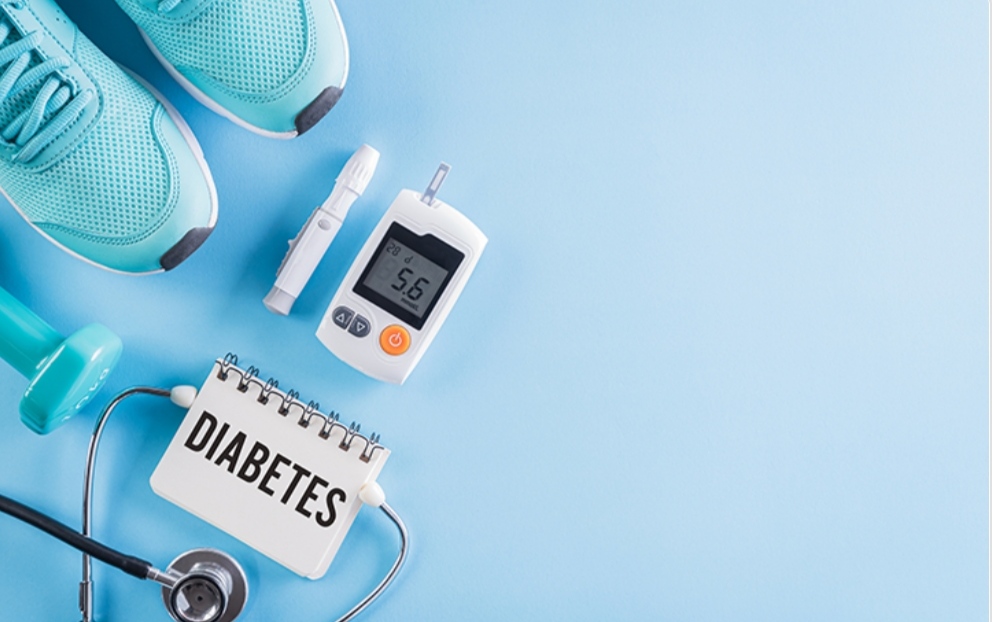Text and Photos by Henrylito D. Tacio
Additional Photo: CDC
Diagnosed more than three decades ago with diabetes, singer-actor Gary Valenciano injects himself with insulin, watches what he eats, and checks the sugar level in his system. “I’ve had many close calls,” he told a news magazine.
During one recent attack, his wife Angeli was roused from sleep by his spasms. He was unconscious and minutes away from going into a coma. The instant glucose she carries with her saves him. “Diabetics should never be alone,” he advises.
What used to be a disease of industrialized countries, diabetes is now rampant even in developing nations. In the Philippines, the prevalence of diabetes is approximately 4.6% to 7.2%, according to a study nursinganswers.net, which reviewed related literature on the subject.
“This figure expands to 17.8% after adding those who have pre-diabetes (impaired fasting glucose or impaired glucose tolerance or both) which has a prevalence of 10.6%,” it said. “Therefore, one out of every 5 Filipinos could potentially have diabetes or pre-diabetes.”
Unfortunately, diabetes awareness among Filipinos is very low, according to Dr. Roy Ferrer, an internist/diabetologist and former assistant secretary of the Department of Health (DOH).
Normal people have several misconceptions about the disease, he said. For instance, they believe that only adults develop diabetes and that the fatter children, the healthier they are. The reverse is true.
“Most think that when a child is fat, he is healthy,” Dr. Ferrer explained. “That’s a myth. Children who are fat have a higher possibility of acquiring the disease because they eat a lot of food that has large amounts of sugar, which increases the sugar level in their blood.”
A lot of Filipinos still don’t know they have it. “There’s a potential time bomb here in the number of people who are going to develop the complications of diabetes,” points out an official of Novo Nordisk, a diabetes care company. “Only a few are diagnosed and treated due to inaccessibility to health care and medication, lack of government spending on health care, meaning patients have to provide for their own medication and education.”
Diabetes mellitus (its complete name) is a chronic, debilitating, and often deadly disease that affects how the body turns food into energy. Normally, the food we eat is converted into glucose and used or stored by the body with little problems. Circulating insulin hormone stimulates the uptake of sugar by the body’s cells. But with diabetes, something goes awry. The pancreas, which is the organ responsible for producing insulin, becomes irresponsible.
Actually, there are two main types of diabetes – Type 1 and Type 2. In the less common Type 1, the body produces little to no insulin. In Type 2, which affects 90 to 95 percent of people with the disease, the cells begin to resist insulin, and the body stops producing enough of it.



Unlike certain crippling diseases, which attack without warning, diabetes sends out warnings by displaying symptoms. Health authorities lists the following:
· Frequent urination and great thirst. When excess sugar in the bloodstream overflows through the kidneys, much water goes along with it, causing a person to urinate more often.
· Weight loss and extreme hunger. When much sugar is lost through the urine, it is not converted to energy. The body then has to get its energy from its fat and protein tissues. This causes loss of weight and increased hunger. The weight loss continues even if hunger has been satisfied.
· Weakness and tiredness. When glucose (like those found in fruit juices) is not properly used for energy and the body has to “feed on itself,” the result can be a general feeling of weakness and tiredness.
· Skin problems. The skin, especially around the genitals, may be itchy. Skin infections are more likely, and cuts or wounds may be slow to heal.
Other symptoms include nausea and vomiting, blurred vision, drowsiness, cramps or numbness in the toes and fingers, and abdominal pain.
Up through early adulthood, both males and females have about the same chances of getting diabetes. Recent studies, however, have shown that by age 30, women are more likely to get it than men; and between the ages of 45 and 65, women are twice as likely to develop diabetes as men.
If not managed properly, diabetes can lead to many other complications. Among these are coronary heart disease, kidney failure, eye problems including blindness, neuropathy, and impaired circulation of the feet, which could lead to gangrene development and amputation of the leg.
Findings, consistent from study to study, make it possible to suggest that, after 15 years of diabetes, approximately two percent of people become blind while about 10 percent develop severe visual handicaps.
The Geneva-based World Health Organization (WHO) says people with diabetes are twice more prone to heart attacks and cardiovascular diseases. “Heart disease accounts for 75 percent of all deaths among people with diabetes in industrialized countries,” it points out.
Diabetes in pregnancy may give rise to several adverse outcomes, including congenital malformations, increased birth weight, and an elevated risk of prenatal mortality.
Recent studies also showed diabetics are 17 times more at greater risk in developing kidney diseases, and for men 50 percent more at risk of becoming impotent.
“Diabetes is a very expensive disease,” said Dr. Alberto Romualdez when he was the health secretary. “It affects all tissues and organs of the body. There is no known cure. Once a person is diagnosed a diabetic, he or she will be on medications for the rest of his or her life and will die a diabetic.”
About 40% of diabetes sufferers require oral agents for satisfactory blood glucose control, and some 40% need insulin injections. This hormone was isolated by Frederic Banting and Charles Best in 1921 in Canada. It revolutionized the treatment of diabetes and prevention of its complications, transforming Type 1 diabetes from a fatal disease to one in which long-term survival became achievable.
People with Type 1 diabetes are usually totally dependent on insulin injections for survival. Such people require daily administration of insulin. The majority of people suffering from diabetes have the Type 2 form. Although they do not depend on insulin for survival, about one-third of sufferers need insulin to reduce their blood glucose levels.
Despite medical advances with new drugs and insulin formulations, diet remains “the cornerstone of diabetes treatment,” to quote the words of Dr. Cynthia Chua-Ho of the Far Eastern University Hospital.
In general, “the nutritional requirements of patients with diabetes are the same as those of non-diabetic individuals,” she said. “A diabetic can probably continue to eat almost all the foods he likes with just a few changes.”
For many diabetics, a regular exercise program may be recommended. Exercise, after all, has a two-fold benefit for diabetics. First, exercise can take some glucose out of the blood to use for energy during and after exercise, which lowers blood glucose levels. Second, it helps delay or stop large blood vessels and heart disease.
“Your first steps toward a more active lifestyle should start with a thorough medical examination,” reminds the American Diabetes Association. “This is the only way to make sure your exercise program meets your individual needs.”
Those in Davao City can visit Dr. Ferrer at the New Central Lab Tower located on Quirino Street (second floor) from 9 am to 12 noon every Monday to Friday. You can also reach him at Ricardo Limso Medical Center Clinic in Room 112 on V. Ilustre Street from 1 to 4 pm every Monday to Friday.
Before going to the clinics mentioned above, please make an appointment first with his secretary through the following numbers: 0967-988-6047 (Globe) and 0922-329-8133 (Smart). You can also message him through Facebook messenger: Diabetes Care and Adult Diseases Clinic.
For teleconsultation, go to the Facebook search engine and type @diabetologistph. Follow the steps therein and set an appointment.

